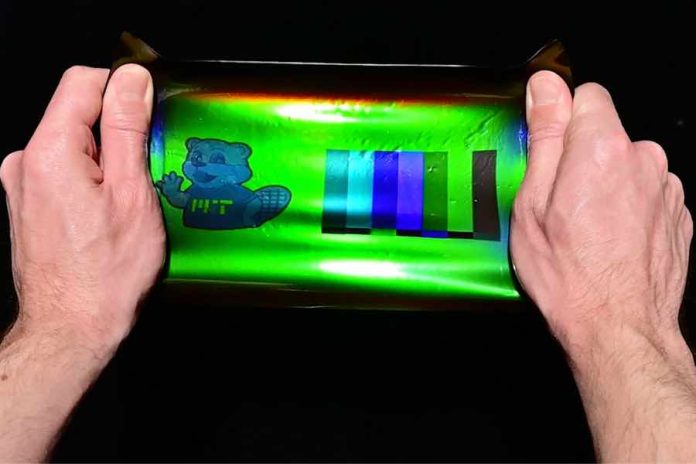An extremely thin film that changes color much like a chameleon changes color has been developed by Chang-Hasnain and a group of engineers at the University of California at Berkeley. The prototype promises to have applications in advertising, entertainment, and in the military.
The film is made of silicon. The average thickness of the film is 120 nanometers. The color changing ability of the film is created by etching the film at intervals that correspond to the wavelengths of a given frequency of light. Some butterflies that appear iridescent and multicolored actually have clear wings. The color is developed in the insects due to the reflection of light caused by the spacing of the clear filaments in the wings. The film uses the same principle.
Different color patterns can be produced by bending the film. Bending the film produces a difference in the distance between the etch marks on the film and produces a different frequency of reflected light. The average distance between the etchings on the film is 25 nanometers. This can produce subtle color variations at as small a range of wavelengths as 39 nanometers.
The military will definitely want this material to develop camouflage that is more versatile and easier to convert between differing landscapes. Advertising can use this material to make ads change with the time of day or the perceived mood of the audience. Entertainers can have a host of new color variations in their wardrobe that change with the music they present or their dancing. The material is cheap and easy to make so color changing cars, houses, and almost anything is possible.















